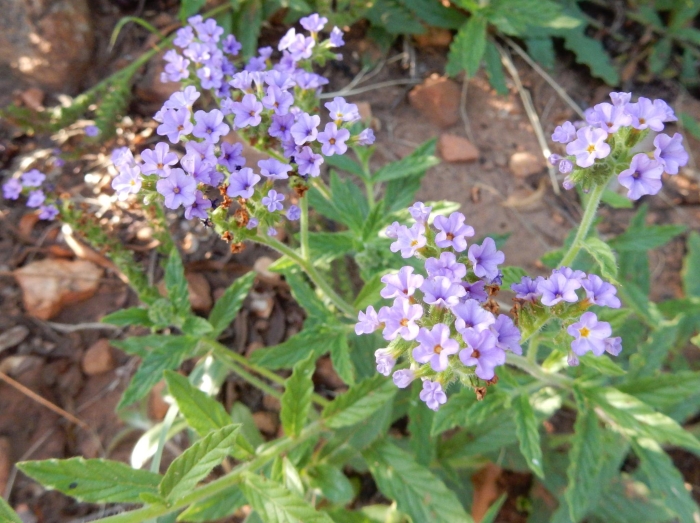Clasping Heliotrope
(Heliotropium amplexicaule)
Clasping Heliotrope (Heliotropium amplexicaule)
/
/

Henry de Lange
CC BY 4.0
Image By:
Henry de Lange
Recorded By:
Copyright:
CC BY 4.0
Copyright Notice:
Photo by: Henry de Lange | License Type: CC BY 4.0 | License URL: http://creativecommons.org/licenses/by/4.0/ | Rights Holder: Henry de Lange | Publisher: iNaturalist | Date Created: 2019-12-18T15:21:10Z |





















































Estimated Native Range
Summary
Heliotropium amplexicaule, commonly known as Clasping Heliotrope, is an evergreen perennial herb originally found in open woodlands and grasslands in Southern South America, including Argentina and Uruguay. It typically grows to a height of 0.7-1 feet (0.2-0.3 meters) and a width of 1-2 feet (0.3-0.6 meters). Clasping Heliotrope forms clumps with branching, hairy stems and is characterized by its abundant foliage of oblong, wavy-edged green leaves that are four to nine centimeters long. The plant is known for its showy blue, purple, and white flowers that appear in the spring, summer, and fall. The curving terminal spike inflorescences display several tiny bright purple flowers with rounded lobes and distinctive tubular yellow throats. After flowering, the plant produces paired rough-surfaced nutlets as fruits.
Clasping Heliotrope is valued for its long flowering season and the vibrant colors of its blooms, which can add interest to borders, container gardens, and as a ground cover. It is relatively easy to maintain, requiring full sun to part shade, low to medium water, and well-drained soil. While it is not particularly demanding regarding soil type, it thrives in loamy soils. Gardeners should be aware that Heliotropium amplexicaule can become invasive outside its native range, particularly in regions like California, and should be planted with caution. It is also susceptible to root rot in poorly drained soils and may attract pests such as aphids and whiteflies.CC BY-SA 4.0
Clasping Heliotrope is valued for its long flowering season and the vibrant colors of its blooms, which can add interest to borders, container gardens, and as a ground cover. It is relatively easy to maintain, requiring full sun to part shade, low to medium water, and well-drained soil. While it is not particularly demanding regarding soil type, it thrives in loamy soils. Gardeners should be aware that Heliotropium amplexicaule can become invasive outside its native range, particularly in regions like California, and should be planted with caution. It is also susceptible to root rot in poorly drained soils and may attract pests such as aphids and whiteflies.CC BY-SA 4.0
Plant Description
- Plant Type: Herb
- Height: 0.7-1 feet
- Width: 1-1.5 feet
- Growth Rate: Moderate
- Flower Color: Blue, Purple
- Flowering Season: Spring, Summer, Fall
- Leaf Retention: Evergreen
Growth Requirements
- Sun: Full Sun, Part Shade
- Water: Low, Medium
- Drainage: Medium
Common Uses
Bee Garden, Bird Garden, Butterfly Garden, Deer Resistant, Drought Tolerant, Hummingbird Garden, Low Maintenance, Potted Plant, Rock Garden
Natural Habitat
Open woodlands and grasslands in Southern South America
Other Names
Common Names: Blue Heliotrope, Summer Heliotrope
Scientific Names: , Heliotropium amplexicaule, Heliotropium anchusifolium, Heliotropium bolivianum, Heliotropium anchusifolium f. medium, Cochranea anchusaefolia, Cochranea anchusifolia, Heliotropium anchusifolium f. grandiflorum, Heliophytum anchusifolium var. angustifolium, Heliophytum sidaefolium
GBIF Accepted Name: Heliotropium amplexicaule Vahl